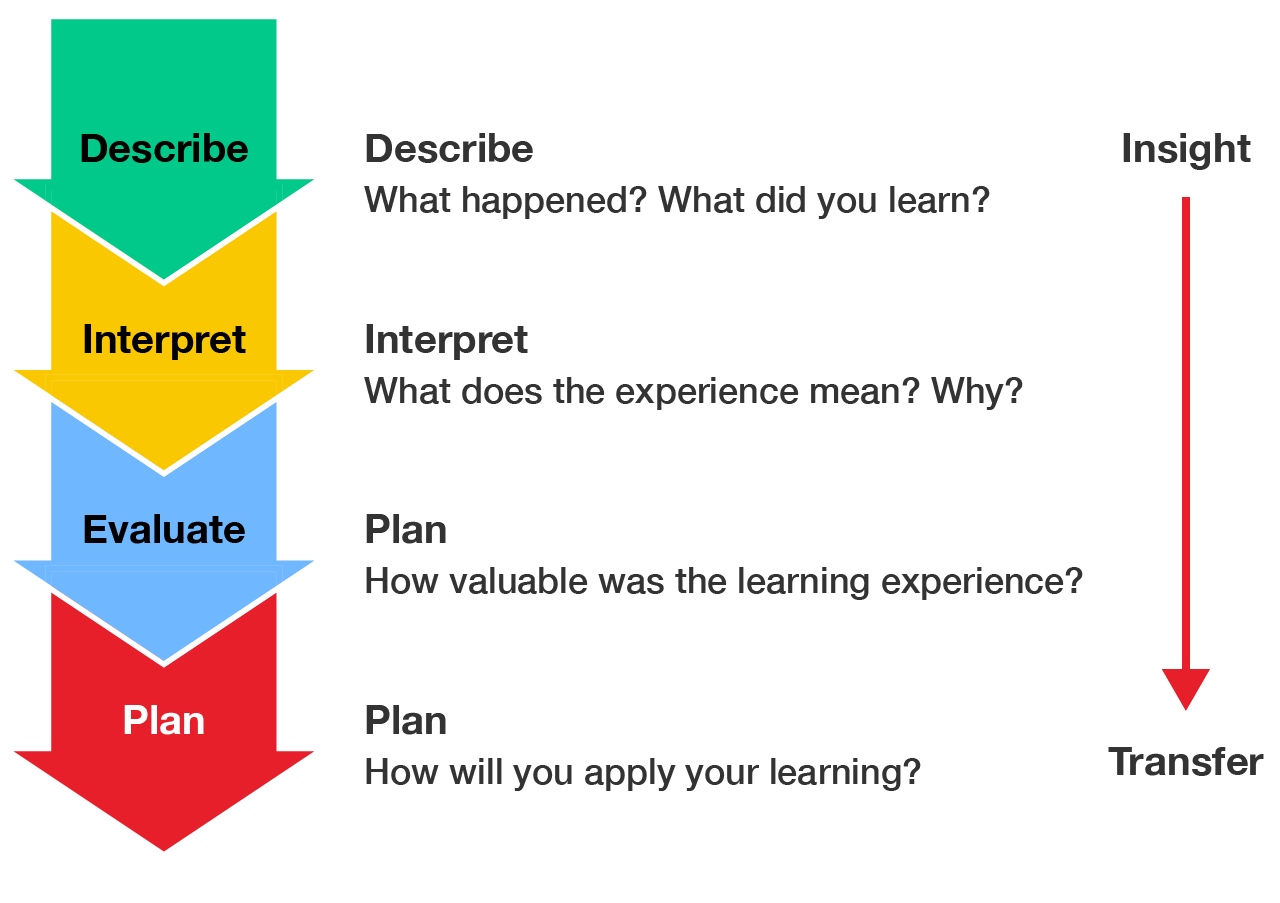Getting started with assignments
This tutorial walks you through the process of preparing, planning and writing an assignment with quick links to the resources you can use at each stage.
Reflective writing requires you to think deeply and write about an experience, event or course content.
This involves writing about:
Reflective writing records the development of your insights and ideas. It focuses on a specific new understanding and its application to future practice.
The following diagram illustrates the reflective process of DIEP.

Insight to transfer: top to bottom.
Describe: What happened? What did you learn?
Interpret: What does the experience mean? Why?
Evaluate: How valuable was the learning experience?
Plan: How will you apply your learning?
Getting started with assignments
This tutorial walks you through the process of preparing, planning and writing an assignment with quick links to the resources you can use at each stage.
Nursing
Critical incident report for nursing
This series of videos covers how to structure and write a critical incident reflection.
Art and design
Mind mapping an artist statement
A guide for writing a structured reflection. The studio knowledge object records learning and insights gained in a design studio course. These insights may be as small as learning a new method for improving your workflow efficiency, or as profound as a change in perspective on design or interest in a new career direction.